One of my favorite poets is Emily Dickinson. She was born on December 10, 1830, in Amherst Massachusetts. She wrote 1,800 poems in her lifetime that we know of for certain. I vividly remember sitting in class as a junior in high school and having to analyze her poem “Because I Could Not Stop for Death” and it made a lasting impact on me. For a woman who lived in only one place, and had little outside social discourse later in life, she had an extraordinary grasp on the natural and spiritual worlds. We can only piece together what we've found for certain to know what her life was like. A fascinating character who lived and died within the 19th century and whose poetry made intangible things into the tangible. Who was influenced by Wordsworth and Emerson yet wrote in her own unique voice.
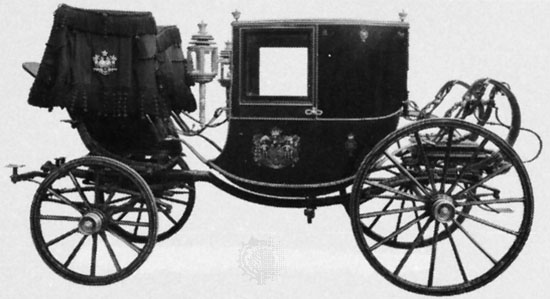
Because I could not stop for Death – (479)
Because I could not stop for Death –
He kindly stopped for me –
The Carriage held but just Ourselves –
And Immortality.
We slowly drove – He knew no haste
And I had put away
My labor and my leisure too,
For His Civility –
We passed the School, where Children strove
At Recess – in the Ring –
We passed the Fields of Gazing Grain –
We passed the Setting Sun –
Or rather – He passed Us –
The Dews drew quivering and Chill –
For only Gossamer, my Gown –
My Tippet – only Tulle –
We paused before a House that seemed
A Swelling of the Ground –
The Roof was scarcely visible –
The Cornice – in the Ground –
Since then – 'tis Centuries – and yet
Feels shorter than the Day
I first surmised the Horses' Heads
Were toward Eternity –
Source: PoetryFoundation.org
Poem Analysis: LitCharts.com
She was the middle child born to a prominent family in Massachusetts. Her father, Edward Dickinson, was a lawyer and trustee at Amherst College who also served as a state representative and senator. She lived most of her life in the Homestead her grandfather built on Main Street in 1813. She attended Amherst Academy in her early years and later Mount Holyoke College. She only spent 10 months at seminary and it's not known for certain why she returned home. Theories are – homesickness, the teachers, her father desired she return home, she rebelled against the evangelical atmosphere of the school, or she was in poor health.
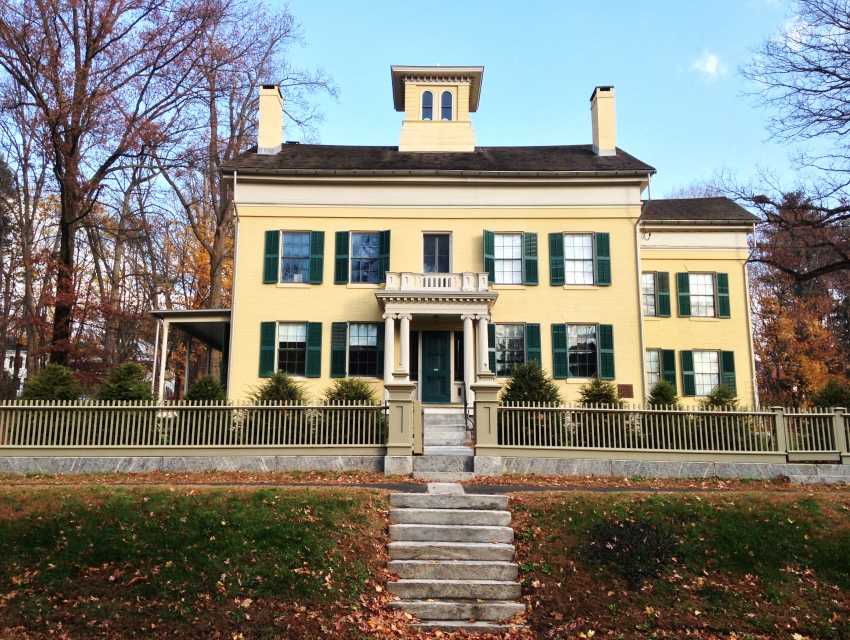
Emily corresponded with Thomas Wentworth Higginson, a literary critic, radical abolitionist, and ex-minister (Wikipedia), beginning in 1862 until her death in 1886. She may have been seeking advice and guidance on publishing her work. They never met as she would not travel, but Higginson did visit her at home in 1870. It's interesting to note that he described her as “a little plain woman with two smooth bands of reddish hair … in a very plain & exquisitely clean white piqué & a blue net worsted shawl.” However, Emily described herself “I am small, like the wren, and my hair is bold, like the chestnut bur, and my eyes like the sherry in the glass that the guest leaves.”[
Around 1867, she began wearing all white and became pretty much reclusive. Staying in her room, the Homestead, or Evergreens which was her brother's home on the property. She would often communicate with others through the closed door of her room. Her only surviving article of clothing is a white dress. Despite her reclusive behavior, she maintained a social life which is evident in her letters and notes. Emily wrote the most letters to her sister-in-law Susan Gilbert Dickinson; over 300 letters. Her sister observed she was “finding the life with her books and nature so congenial, continued to live it”.
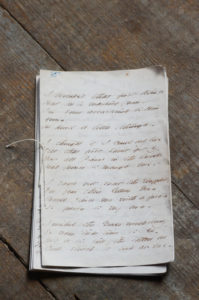
On May 15, 1886, she passed away after two and a half years of declining health which theories have suggested may have been related to hypertension. Her coffin was placed in the hallway of the Homestead and a simple service was held with Higgensen reading “No Coward Soul Is Mine” by Bronte.
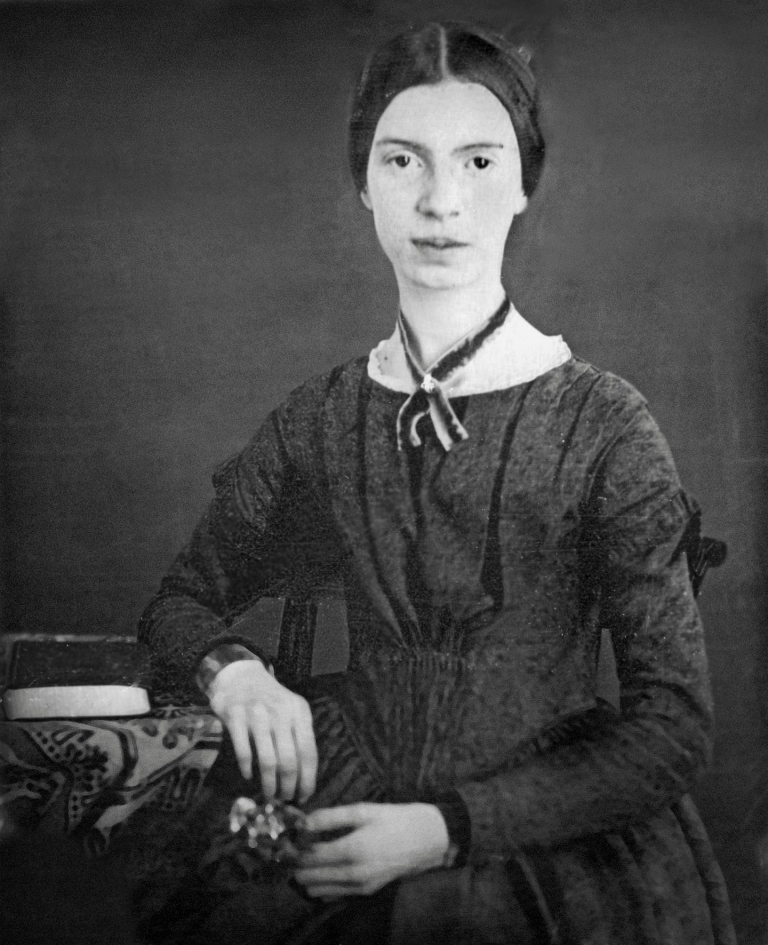
At her request, her coffin was carried outside by the president and professors of Amherst College, put down, and then carried by six Irish workmen who had been hired men on the Dickinson grounds.
Following her late directions, they circled her flower garden, walked through the great barn that stood behind the house, and took a grassy path across house lots and fields of buttercups to West Cemetery, followed by the friends who had attended the simple service.
Source: The Emily Dickinson Museum
“I heard a Fly buzz – when I died –
The Stillness in the Room
Was like the Stillness in the Air –
Between the Heaves of Storm -“
– From Fr591
I read her poems and quotes as I go along and each strikes a chord. I hope you enjoy her work, and if you aren't familiar with it, I wish you joy in discovering it.
*Featured image: Photo by Wendy Maeda/The Boston Globe via Getty Images

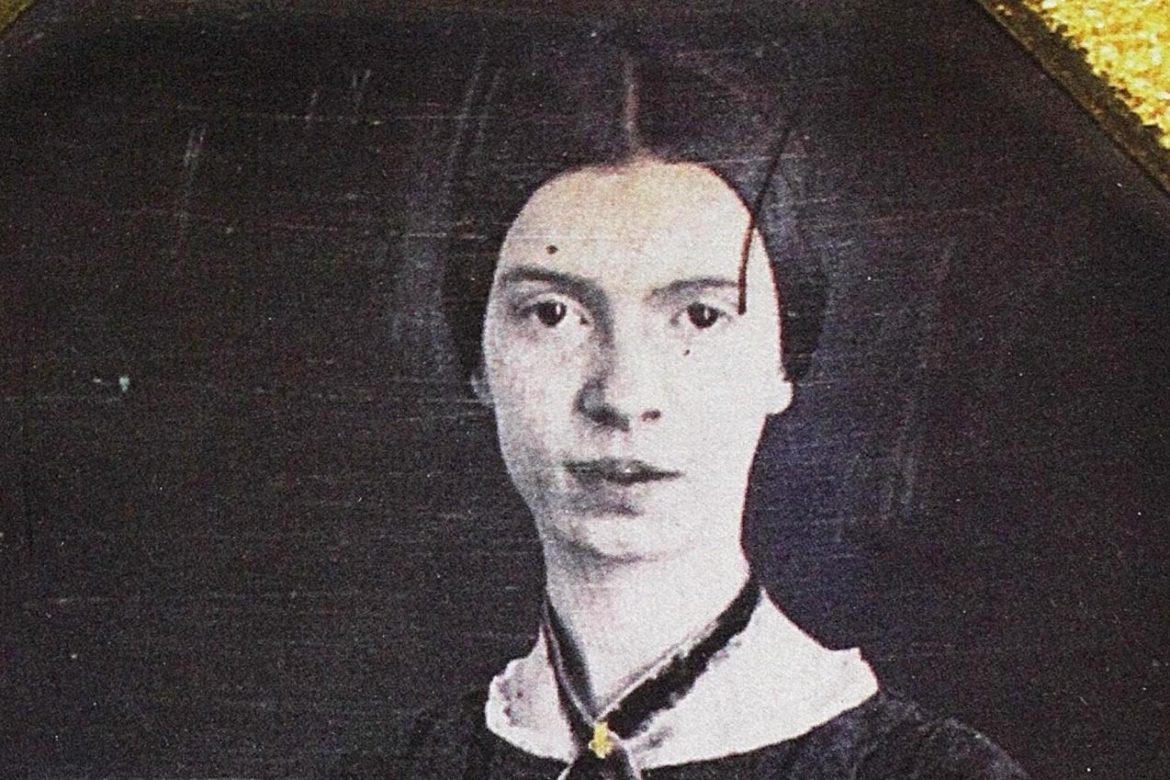
3 Comments
Pingback: Emily Dickinson Poem: Will there really be a morning? - newpoeinwonderland
Pingback: Emily Dickinson’s Autumn and a few Facts - newpoeinwonderland
Pingback: Emily Dickinson Paints Her Portrait - newpoeinwonderland